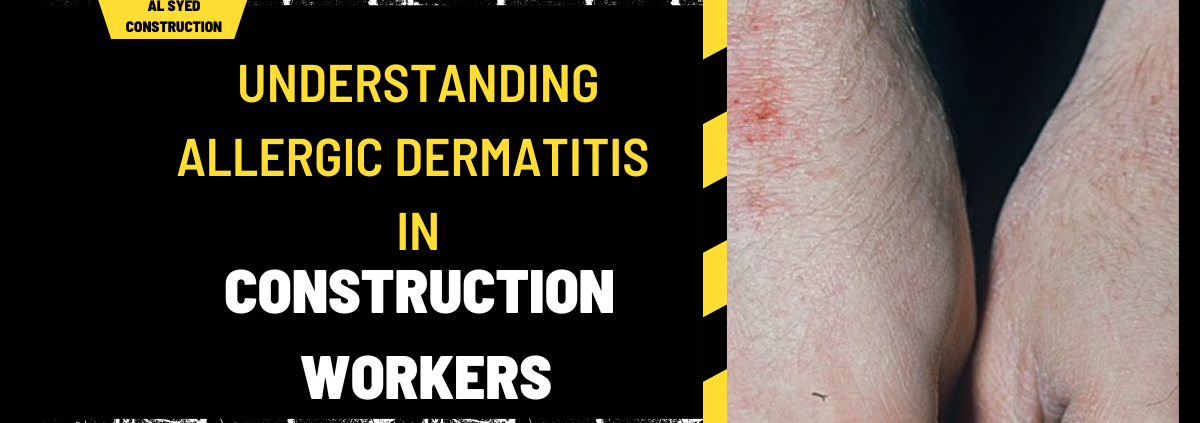Understanding Allergic Dermatitis in Construction Workers
Table of Contents
Introduction
In the demanding field of construction, allergic dermatitis presents a unique and significant occupational health concern for workers. This condition, characterized by inflammation and irritation of the skin due to exposure to allergens, poses particular challenges that need careful consideration and proactive management.
What is Allergic Dermatitis?
Allergic dermatitis, also known as contact dermatitis, is a type of skin reaction that occurs when the skin comes into contact with substances that trigger an allergic response. In construction settings, workers are exposed to a wide range of potential allergens, including chemicals, solvents, cement, metals, and even certain types of protective clothing and equipment.
Common Causes of Allergic Dermatitis in Construction
1. Chemical Exposure:
- Chemicals such as epoxy resins, adhesives, paints, and solvents are prevalent in construction materials and processes. Prolonged or repeated exposure can lead to sensitization and allergic reactions.
2. Cement and Concrete:
- Cement contains substances like chromium and cobalt, which can cause allergic dermatitis, commonly known as cement dermatitis. Workers involved in mixing, handling, and finishing concrete are at risk.
3. Metal Exposures:
- Metals such as nickel, cobalt, and chromium are found in construction materials and tools. Contact with these metals can trigger allergic reactions, especially among workers with existing sensitivities.
Symptoms and Effects
1. Skin Irritation:
- Symptoms of allergic dermatitis include redness, itching, swelling, and blistering of the skin. Affected areas may become dry, cracked, and painful, compromising comfort and productivity.
2. Chronic Condition:
- For some individuals, allergic dermatitis can develop into a chronic condition, requiring ongoing management and potentially impacting long-term health and quality of life.
Preventive Measures and Risk Mitigation
1. Personal Protective Equipment (PPE):
- Proper selection and use of PPE, including gloves, protective clothing, and respirators, can minimize skin exposure to allergens and irritants.
2. Engineering Controls:
- Implementing engineering controls such as ventilation systems, automated processes, and substitution of less hazardous materials can reduce the risk of exposure.
3. Training and Awareness:
- Comprehensive training programs that educate workers about potential allergens, safe handling practices, and early recognition of symptoms are crucial.
Management Strategies
1. Medical Surveillance:
- Regular health screenings and dermatological assessments help identify early signs of allergic dermatitis and facilitate timely intervention.
2. Skin Care Protocols:
- Establishing routine skin care protocols, including handwashing techniques, use of moisturizers, and prompt removal of contaminated clothing, supports skin health and minimizes risks.
Conclusion
In conclusion, allergic dermatitis remains a significant occupational hazard for construction workers due to exposure to various allergens and irritants. By prioritizing preventive measures, awareness, and effective management strategies, employers and workers can mitigate risks, promote safety, and enhance overall well-being in the construction industry.




